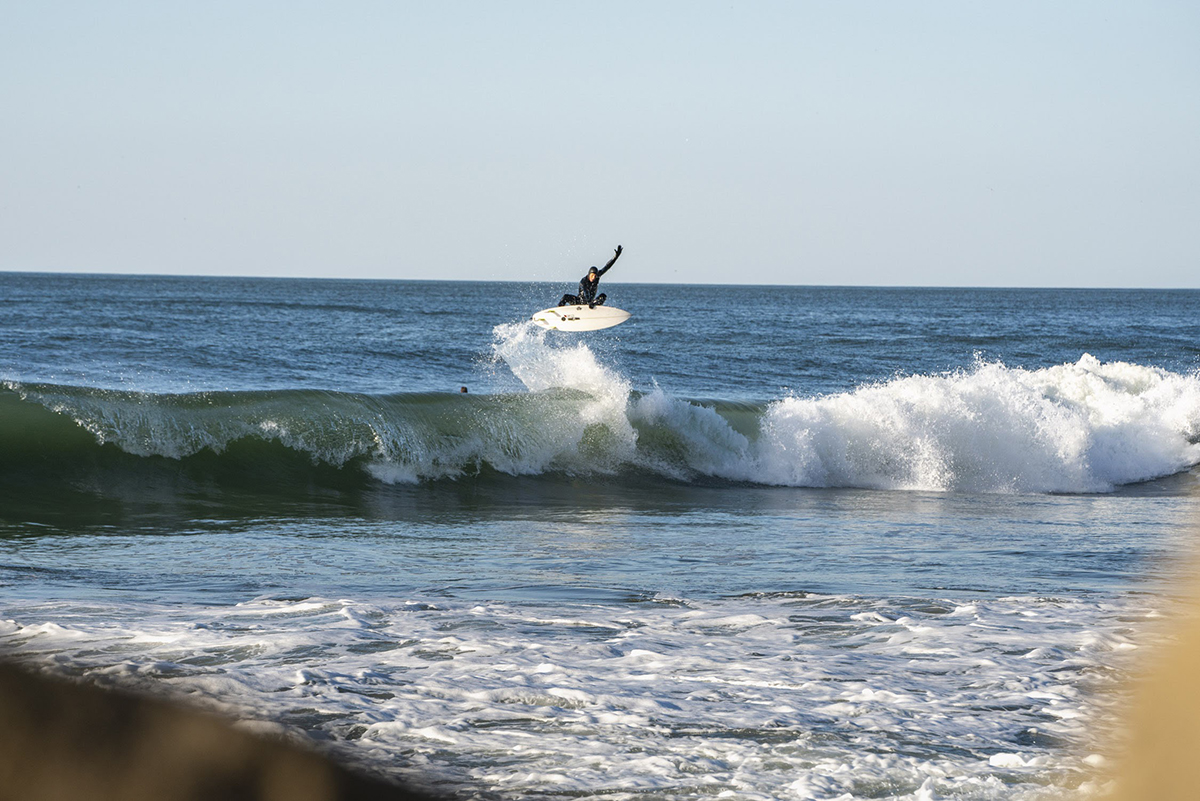Dalton’s Deep Dive
With his Tamron 70-180mm F/2.8 Di III VXD telephoto zoom lens, Dalton Johnson heads into the waves to capture the adrenaline-packed world of surfing.
More Photo Tips | Video Gallery | Photo Gallery | Enewsletter sign-up
By Jenn Gidman
Images by Dalton Johnson
When it comes to surfing images, there are two main categories of photographers: those who hunker down on the beach for a day of sand and surf, and those who take a more immersive view. Dalton Johnson belongs to the latter camp, traveling up and down the California shoreline and Mexico’s Baja coast with his Tamron 70-180mm F/2.8 Di III VXD telephoto zoom lens, ready to jump into the water at a moment’s notice to make sure he doesn’t miss any of the action.
“I started surfing myself when I was 8 years old,” says the lifestyle and adventure photographer. “I also swam competitively from the ages of 3 to 18, and played water polo in college. That gives me a leg up in some ways when it comes to taking surfing pictures. I’m in a position where I feel comfortable swimming into bigger waves that maybe other photographers would feel more wary about.”
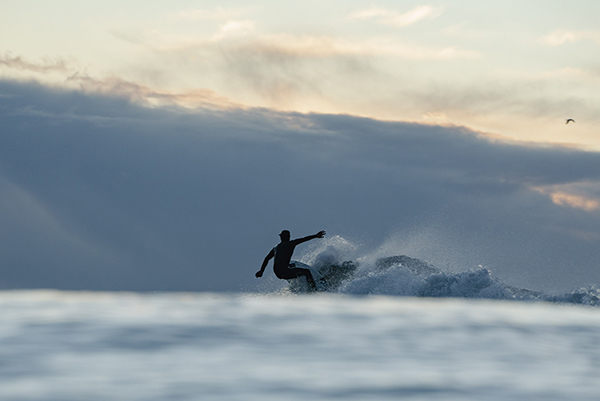
180mm, F/7.1, 1/400th sec., ISO 400
Click image to view larger
Dalton, who spends half the year photographing mainly surfing and the other half concentrating on climbing photos—“luckily, the best surf in California happens when climbing is out of season”—slides his camera and 70-180mm lens into a special underwater housing when it’s time to head to the beach. “The 70-180 is way lighter than the other lenses I’ve used for my surfing photography, even with the housing included,” he says. “You have to be agile when you’re in the water, so the lighter the better. Plus the lens focuses super-fast, which is important, because when you’re in the water you don’t really have the ability to do a lot of manual focusing.”
Dalton, who tries to head out during the golden hours before sunrise and after sunset, will typically shoot in Shutter Priority using center autofocus when he’s taking pictures from the water. “I’m usually shooting at a speed of between 1/1200th of a second and 1/1600th, though if it’s a slower wave, I’ll shoot at 1/800th,” he says. “That allows me to ‘smear’ the wave and get a little more creative with my photos.”
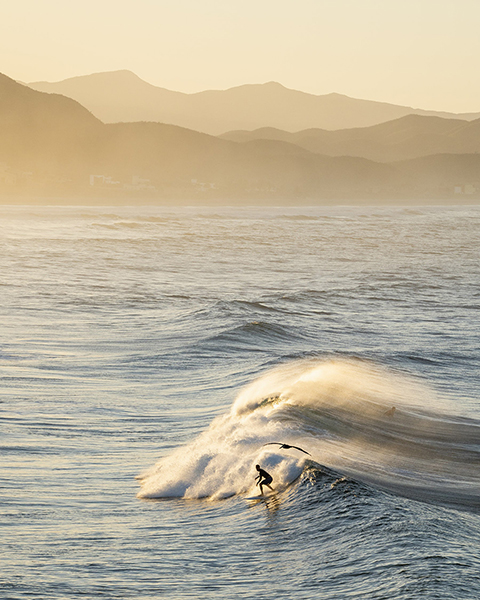
180mm, F/11, 1/800th sec., ISO 800
Click image to view larger
Needed for a day at the beach, per Dalton: a telephoto lens like the 70-180, a laid-back attitude (“you want to have fun while you’re taking these pictures!”), and a basic understanding of the anatomy of a wave. “You can sit in the channel, which isn’t part of the wave but where the surf that just came in flows back into the ocean, or along the shoulder, which is the calmer, flatter part of the wave that’s not peaking,” says Dalton. “Try to position yourself at a 45-degree angle to the surfer for some interesting shots.”
Water safety is also crucial. “If you get too close to a surfer—especially a surfer with one of the longer boards—and their board hits you in the head, you’re probably going to get knocked out,” Dalton says. “I’ve been doing this for a while and work with many professional surfers who know what they’re doing as well, but especially if you’re just starting out experimenting with this type of photography, you need to understand the risks and avoid them at all costs.” (Dalton elaborates on some other water safety issues you should be aware of here.)
Despite being cautious, Dalton has had some close calls. “I was photographing a wave that was big enough to warrant safety crews for the surfers,” he says. “I was taking pictures from the water and was situated in a precarious spot, and the safety crew asked if I wanted them to keep an eye on me, too. I agreed, which turned out to be a good idea, because at one point I needed to wave them in to help me. If they hadn’t been there, there was a real possibility I could’ve been smashed against the rocks.”
That’s where the 70-180mm lens consistently comes through for Dalton yet again. “If it’s rough waters or an otherwise risky situation, I’m able to stay far enough away so that I don’t have to worry about getting hurt,” he says. “The 70-180 gives me the reach I need so that I can hang out on the shoulder and still get all of the photos I was hoping for.”
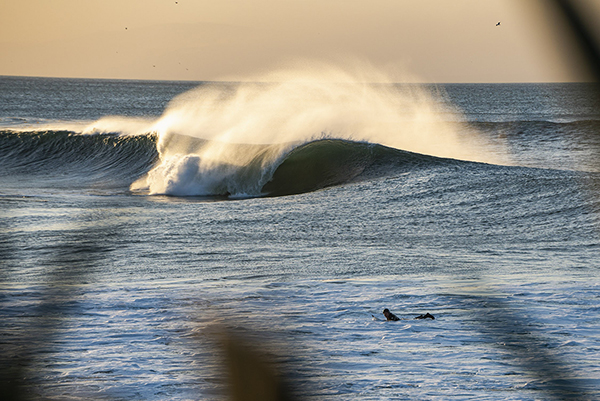
180mm, F/5.6, 1/1250th sec., ISO 400
Click image to view larger
Collaborating with the surfers before they even head out into the water is key. “It’s helpful to know what maneuvers they’re expert at and what they plan on doing in the water,” he says. “That allows me to know whether I should be paying attention to the barrel of a wave, or maybe more on the spray of the water as they finish slashing through the top of a wave. That, in turn, hints at what focal length I should be using. My best photos emerge when I’ve done the planning ahead of time.”
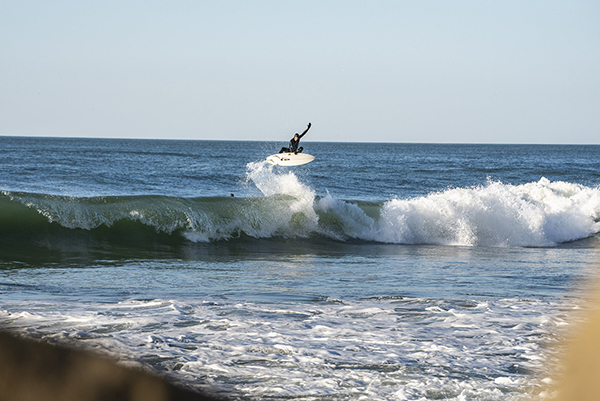
180mm, F/8, 1/1250th sec., ISO 400
Click inage to view larger
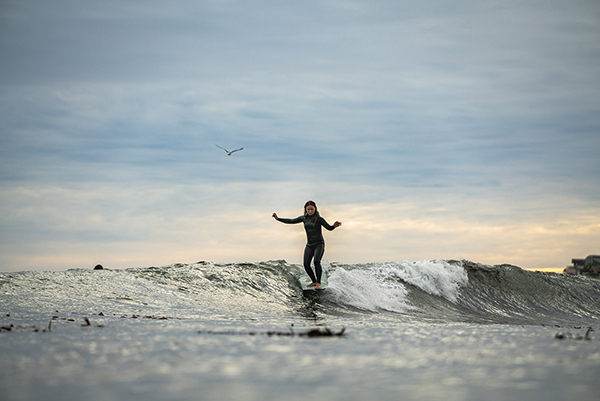
180mm, F/4.5, 1/1000th sec., ISO 400
Click image to view larger
Although Dalton spends much of his time capturing the surfers in action, he also likes to take pictures of the quieter moments, when the surfers are carrying their boards or just hanging out in the water, surveying the landscapes and seascapes in front of them. This offers Dalton the opportunity to capture more of the environment and put the scene in context. “Dawn patrol is a big thing in the surfing community, and that’s when I’m able to capture many of these types of lineup shots,” he says. “In California especially, people will often go surfing before work. It’s part of the lifestyle, and I’m lucky to be able to document that.”
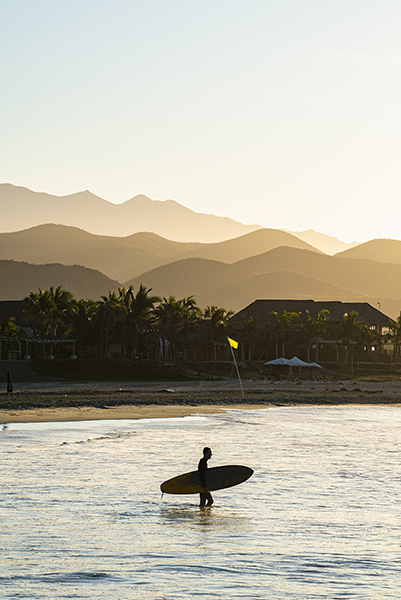
180mm, F/11, 1/320th sec., ISO 200
Click image to view larger
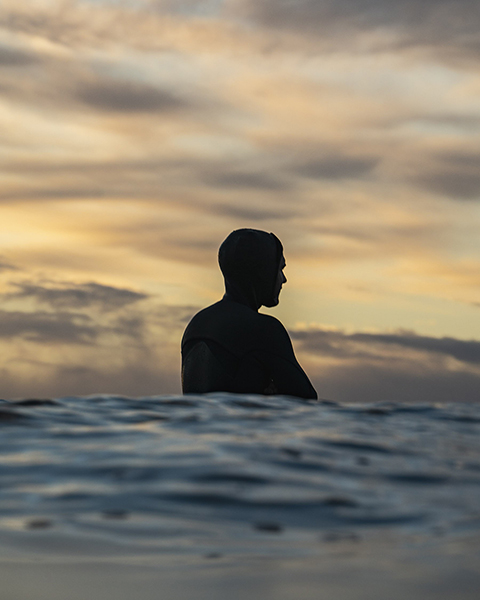
180mm, F/10, 1/400th sec., ISO 400
Click image to view larger
To see more of Dalton Johnson’s work, go to www.daltonjohnsonmedia.com or check out his Instagram.
More Photo Tips | Watch Videos | Learn More About Tamron Lenses | Photo Gallery
